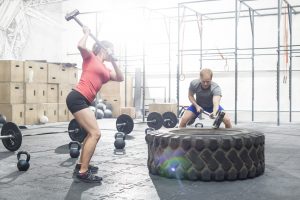
I once had a very athletic client who loved all different kinds of sports. He was a very adventurous sort and would try anything. He was also an all or nothing kind of guy. When he started something new he went whole hog.
When he called to book an appointment with me I would ask him what new activity he had wrecked himself doing this time. He would laugh and tell me his story about some new sport he had thrown himself into and what injury he had now. He would come in and explain to me what happened and we would look at his whole body and what caused the current injury, which was always instability in an area other than where the pain was.
After a few cycles of this, I asked him why he didn’t come to see me BEFORE starting a new activity so we could avoid the injuries in the first place. He looked at me like I was speaking Greek. You see, most people don’t think of physiotherapy as preventative. We figure you injure yourself, hobble in to see the physiotherapist, and get “fixed”. We aren’t aware that these things are avoidable.
When speaking about injury prevention, most therapists focus strictly on improving brute strength, flexibility and maybe “core stability”. Injury prevention is not exclusively about any of these things. It is about optimizing movement patterns, which are a dynamic combination of stability and mobility.
It is not brute strength that is needed, but rather the right amount of muscle activity at the right time, pulling in the right direction. Great numbers of muscles need to work in a coordinated smooth pattern, like a finely tuned orchestra. Brute strength will not achieve this. While flexibility is important, mobility without stability is like a car without brakes. In fact, people who are hyperflexible are at greater risk of injury as they often lack the “brakes” on the movement.
As for “core stability”, I put it in quotes because I find that the emphasis is often on static holding as opposed to dynamic responsiveness. For example, if you are practicing holding a plank position, that will improve your ability to hold a static position, but it will not necessarily translate into the dynamic stability you need when someone crashes into you while you are playing soccer. If you are doing crunches or sit-ups you may have stronger abdominal muscles but they may only work in a specific direction (as in straight up and down) and not help you when you twist.
In order to prevent injury, overall dynamic stability needs to be addressed. By doing a whole body assessment we can see where the vulnerable areas are and address them before something happens. Why wait for an injury that puts you out of activity? Come in for a tune-up before starting!